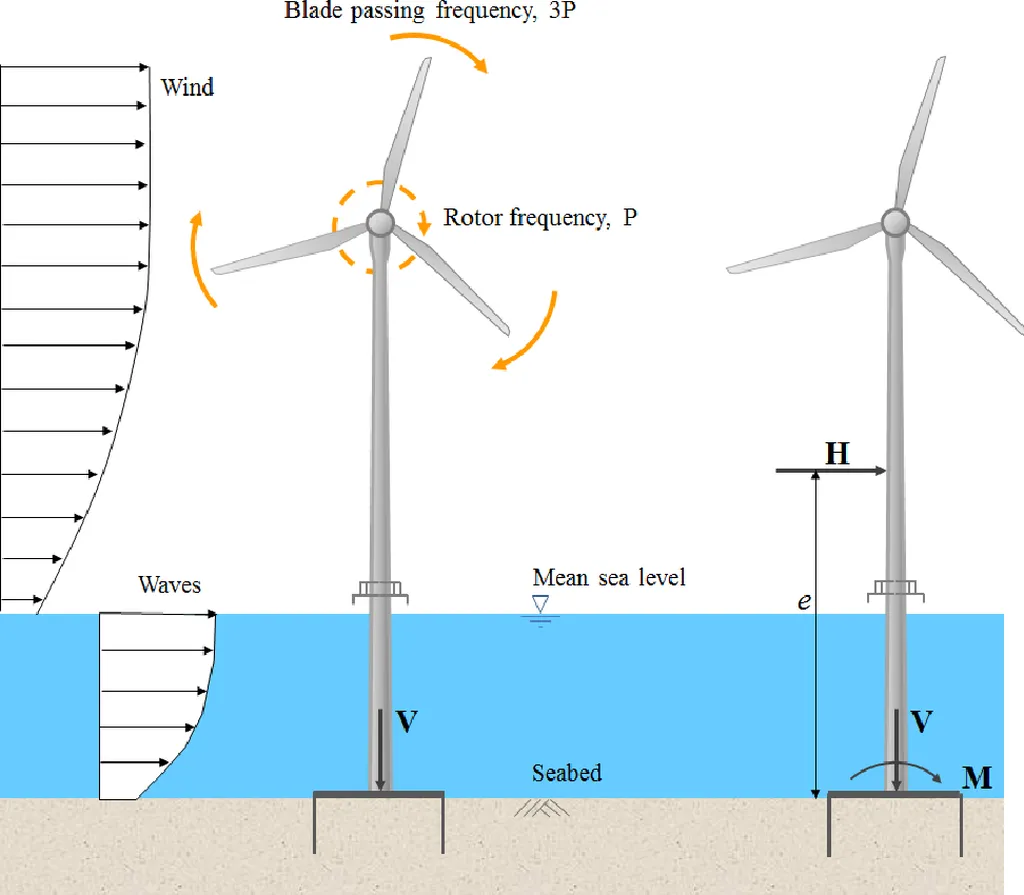In the rapidly evolving world of offshore wind energy, the quest for stable and efficient foundations has led researchers to focus on suction caissons, a popular choice for deep-water constructions. A recent study published in the *Advances in Civil Engineering* journal, led by Lunbo Luo from the Academy of Science and Technology, sheds light on the pullout behavior of these caissons in stratified soils, offering valuable insights for the energy sector.
Suction caissons, which are large, hollow, cylindrical structures, are increasingly favored for their ease of installation and high load-bearing capacity. However, their performance can vary significantly depending on the soil conditions. Luo’s research investigates the influence of different soil types, pullout rates, and loading frequencies on the pullout bearing capacity of suction caissons.
The study found that the type of stratified soil has a substantial impact on the pullout bearing capacity. “In clay-over-sand stratified soil, the pullout bearing capacities are significantly higher compared to other soil types,” Luo explains. The research revealed that the capacities were 425%, 155%, 283%, and 377% relative to those in pure sand, sandwich soil, sand-over-clay, and pure clay, respectively, under monotonic pullout loadings. This finding is crucial for engineers designing foundations for offshore wind turbines, as it highlights the importance of considering soil stratification in their calculations.
Moreover, the study demonstrated that increasing the pullout rate enhances both the bearing capacity and the associated passive suction and displacement until the pullout bearing capacity is achieved. This insight could lead to more efficient installation practices, as faster pullout rates might reduce the time and cost of deployment.
The research also explored the effects of cyclic loading, which is relevant for structures subjected to repeated environmental forces. It was found that low-frequency cyclic loading induces greater accumulative displacement than high-frequency cyclic loading. “Cyclic loading reduces the pullout capacity, and this effect is more pronounced at high pullout rates,” Luo notes. This information is vital for ensuring the long-term stability of offshore structures in varying environmental conditions.
To translate these findings into practical applications, Luo and his team proposed modified equations to calculate friction forces and reverse end bearing capacity, considering the effect of stratified soil. These equations can be used to optimize the design of suction caissons, making them more reliable and cost-effective.
The implications of this research are far-reaching for the energy sector. As offshore wind farms continue to expand into deeper waters, understanding the behavior of suction caissons in different soil conditions becomes increasingly important. By providing a clearer picture of the factors influencing pullout behavior, this study can guide engineers and developers in making informed decisions, ultimately leading to more robust and efficient offshore wind energy infrastructure.
In the words of Luo, “Our research aims to elucidate the mechanism of suction caisson behavior in stratified soils, providing a solid foundation for future engineering practices.” As the world seeks to harness more renewable energy, such advancements in foundation technology will play a pivotal role in shaping the future of offshore wind power.

